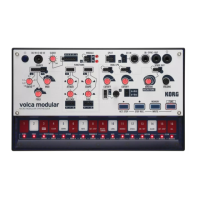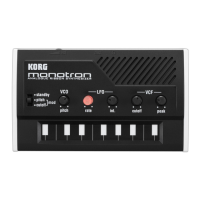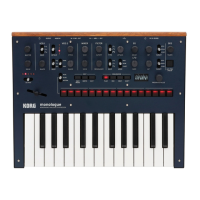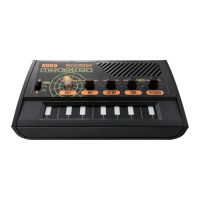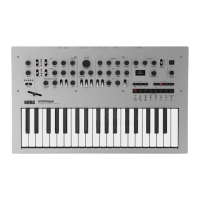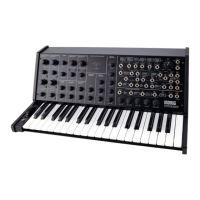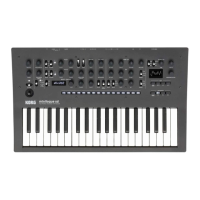Basic Editing
11
On: The first note in a legato phrase will sound normally; subsequent notes in the phrase will sound smoother (for
instance, envelopes will continue instead of restarting).
Off: Legato playing will produce the same sound as detached playing.
Priority
[Low, High, Last]
Priority is available when Voice Assign Mode is set to Mono.
This determines what happens when more than one note is being held down.
Low: The lowest note will sound. Many vintage monophonic analog synths work this way.
High: The highest note will sound.
Last: The most recently played note will sound.
Unison Voices
[1…16]
Unison can be used in both Mono and Poly modes.
1: Unison is off, and Stereo Spread and Detune do not apply.
2-16: The Program uses the specified number of more stacked, detuned voices to create a thicker sound.
Detune
[0…200 cents]
This parameter sets the tuning spread for the Unison voices.
Voices = 3, Detune = 24, Thickness Off
Voices = 4, Detune = 24, Thickness Off
Thickness
[0…100]
This parameter controls the character of the detuning for the unison voices.
0: Unison voices are evenly distributed across the Detune range, as shown above.
1…100: Unison voices are detuned asymmetrically. This makes the detuning more complex, and changes the way in
which the pitches beat against one another—like slightly out-of-tune oscillators in a vintage synthesizer. Higher
numbers increase the effect.
Stereo (Spread)
[0…100]
Stereo lets you create a wider stereo field when using Unison. It applies only when Unison Voices is 2 or greater.
Voices Detune
1–12
2 0
3+12
Voices Detune
1–12
2 –4
3+4
4 +12
